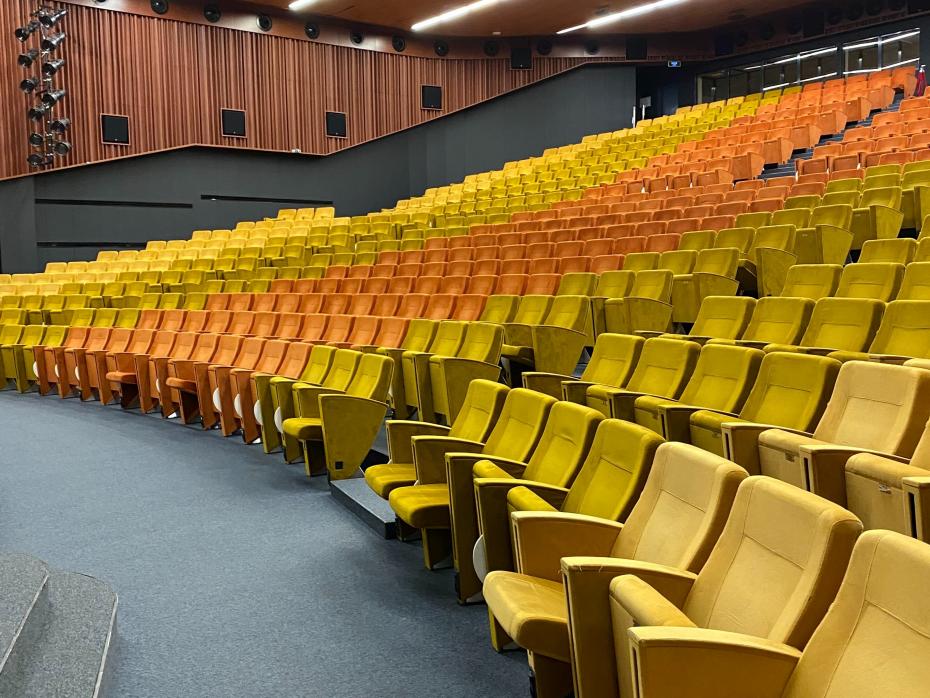The term “traditional lecture” appears frequently but its meaning depends on the context. For me, it simply means the model of a lecture I used before the model I use now. I’ve also seen this term to mean a lecture where students listen silently to the lecturer and make notes. The design of a lecture will take many factors into account, including the topic, how it fits with the other learning opportunities and the size of the class. Above all else, the design should consider how the lecture can best support students’ learning.
I’ve always favoured active learning within lectures. This is to give students time in which they can contemplate and discuss the material together. Students are then participants in the lecture and not just recipients. The interactions that occur in an active classroom can extend beyond the lecture and help students become part of a wider learning community.
In a small lecture, held in person, one can achieve an active environment without the need for any technology. The goal of having active learning within large or online lectures can be achieved but needs the right set of tools. Indeed when applied effectively, these tools can make the active environment more inclusive, even in the setting of a small class.
A traditional active lecture
The core active loop of a flipped lecture consists of the following:
- Ensure students have the necessary foundation. This can be through material assigned for review in preparation for the lecture or directly from the lecturer’s presentation. In practice, I have found a combination of these to be best.
- Pose a question and give students time to think and formulate a response.
- Collect individual responses.
- Give students time to discuss their responses with those around them, or in small groups.
- Collect the updated responses and explore with the class.
Care needs to be taken in the design of the questions and these need to consider how responses are collected. There are many different “classroom response systems” available but the choice may be constrained by the system used by a specific institution. Ideally one can use a software solution where students can see and respond to the question on their smartphone. My institution currently uses TopHat, but alternatives include Poll Everywhere and Kahoot!. Each offers a range of question types. Typically multiple choice, free text and clickable images. With practice, one can write engaging and often quite fun questions.
A good question will inspire discussion. In my discipline, mathematics, it’s much better to challenge students’ understanding of core concepts rather than test procedural skills. That discussion allows students to support each other’s learning during the lecture. The lecturer can view the responses to get an insight into the specific needs of the class and use the final step in the cycle to begin to address these. It can also be useful to show the summary of responses to the class so students can see how their contribution fits beyond the smaller discussions they had.
An online flipped lecture
When students attend an in-person lecture there are always moments during which they can interact with others. At a minimum they have time before the lecture begins and after it has ended. These interactions are valuable both academically and socially and I regret that some will be missed in a synchronous online lecture. In response, it is important to maximise opportunities for active learning with the lecture.
To achieve this, one can move much of the presented content of a lecture to pre-recorded videos. This move has a secondary benefit of increasing the amount of asynchronous and flexible material. Within the lecture, the core active cycle is mostly unchanged. The small discussion groups now take place in breakout rooms with three to five students. As a lecturer, one can move between rooms and speak with students on a comfortable scale. The rooms don’t always discuss the material at hand for the full time given, but I value these conversations as students become part of their wider community.
As technology develops these options become more viable but each platform has limitations. Platforms such as Teams or Zoom currently have a limit of 50 or 100 breakout rooms which limits the number of students in each lecture before the breakout rooms become too large to be effective. These limits should grow as the software is developed so it’s important to review options before use.
Teaching and learning online can make it harder for students to see the wider community they are part of. As teachers, we can design our online courses to enable students to work together and build connections. With the support of staff and of each other students have the opportunity to excel, whether learning in person or online.
David Quinn is a university teacher in mathematics at the University of Edinburgh.




comment